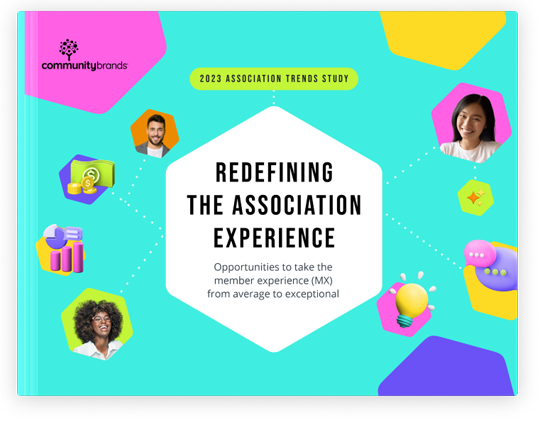Anyone who knows me can tell you I’m a huge fan of horror movies. Yep. And, I can talk about why horror is important all day. Even though some may think horror movies are ludicrous, there’s still something to be learned from them. Whether such movies include serial killers, poltergeists, zombies or homicidal clowns who travel across the galaxy in a circus-tent-shaped spaceship (no matter how hard we laugh or roll our eyes), there’s always a valuable lesson to be found somewhere within the preposterousness.
In my experience, only a small number of real-life situations have made me feel the same fear and outlandishness as a good horror movie. And, you know what’s on my list? The epic “Bad Nonprofit (or Association) Board Meeting.”
You know what I’m talking about. You’re bright-eyed, altruistic and ready to help shape the future of your organization, while simultaneously making the world a better place. But first, you sit through 90 minutes of budget line-item negotiation, bickering, and worst of all, program updates. Soon, you feel tension, anxiety, absurdity and, if it’s close to the end of the fiscal year, maybe even sweaty palms.
The truth is, it takes a special skill to navigate board meetings when they start to take a turn. And, if you aren’t in a leadership position with your board (maybe you’re even a new member), you may feel helpless as others attempt to dominate the meeting.
So, in honor of the historically scariest day of the year—Halloween, I provide you with some key lessons learned from watching horror movies which can help anyone turn a scary-bad board meeting into a successful one.
Lesson 1: Come prepared.
Those who survive horror movies in the end are almost always the ones who are prepared for the worst. Read the agenda ahead of time and know what the group is slated to discuss on that day. While there may always be diversions or digressions during the conversations, this will help you avoid any gruesome, ghoulish surprises which might require some pre-work or research on your part.
If you’re bringing information to the meeting, such as updates on financials or programs you’re running, be sure to summarize those details in an easy-to-read, quickly-digestible format, and distribute them ahead of time. If your board is planning to talk about the budget during the next meeting, bring a copy of the budget. When the meeting starts to go awry with questions, you will be glad you have supplemental information on hand to help guide the discussion.
Lesson 2: Listen to locals.
How many times have characters in horror movies ignored ominous warnings from the locals, only to meet an unfortunate end? Avoid this pitfall by paying attention to those who have served on the board longer than you or are volunteers for your organization. Often, these people have great perspective you can leverage, such as approaches which haven’t worked.
You may want to laugh at the idea: “What’s the worst that could happen if I take over both fundraising and social media/marketing?” Chances are they’ve watched members like you take on too much and have seen the ill fate that befalls them.
But, while you’re listening to those long-timers, keep in mind you may want to take some of what they share with a grain of salt. If the board has been following the same calendar of events for the past eight years and fundraising hasn’t increased, maybe it’s time to try something new. Don’t assume because it has always been that way, it needs to stay that way.
Lesson 3: Skip shortcuts.
All boards struggle for time and budget; this is an age-old quandary of organizations. But, if your president swears she can build the organization an accounting system because she “knows Excel” or your secretary swears he knows someone who will volunteer personal time to update the website for your Fall fundraiser in two weeks, don’t assume this is going to be easier.
Take the time to evaluate whether outsourcing efforts or purchasing technology is a worthwhile investment. Don’t risk burning out your board members or pigeonholing yourself into a short-term technology solution because you want to save time right now. If you do, you can find yourselves in some real-life horror.
Lesson 4: Beware of ominous artifacts.
When was the last time your bylaws were updated? 1982? Does your board only have printed lists of donor information? Beware. These ancient artifacts are almost always haunted and can bring severe consequences to those who do not heed this warning.
Block off time on the agenda to regularly review your bylaws and make sure you’re keeping the most up-to-date documentation possible. This will save a lot of time and confusion when such information is needed during a meeting, and can be critical.
Lesson 5: Know your surroundings.
If you truly know your organization, your peers and your mission, you can work with other members to make the best choices and facilitate productive conversations during meetings. It may not always be easy, but make sure you’re fostering relationships with other board members outside of the board meeting, maybe even by inviting them out for coffee.
When the time comes and the conversation is heated, you can more easily relate to and communicate with your peers. This ensures you aren’t left out in the cold—frozen and alone—at the end of the conference room table.
Lesson 6: Think twice.
If any one of your board members suggests taking the annual retreat at a creepy cabin in the woods; or suggests everyone take a break and say, “Bloody Mary” five times in a mirror in the dark; or asks if anyone wants to check out the building basement; or if one of your members breaks out the Ouija board and says, “Hey, why don’t we ask one of the spirits to help us make a decision?” . . .
Simply, just don’t do it.
Lesson 7: Make sure it’s dead.
Your fellow board members can be persistent. And, if they’re passionate about a topic, they can derail conversations during the meeting to drive home their point. If a decision is made, try not to let the meeting devolve. Avoid revisiting a topic once it’s closed, at least for the current meeting. The last thing you want is to lose time discussing a proposal stabbed, shot, set on fire and buried more than 20 years ago.
Lesson 8: Trust your instincts.
Last, but not least, my favorite horror movie lesson is to trust your instincts. There’s no eerie twist on this one. You are on your board for a reason. Likely, you are passionate about your organization’s cause, and are truly dedicated to making big changes in the world. Keep doing that. Work with your peers as best you can, be patient, and all of you—together—can help make this scary world a better place.
Oh. Boo! Happy Halloween!






